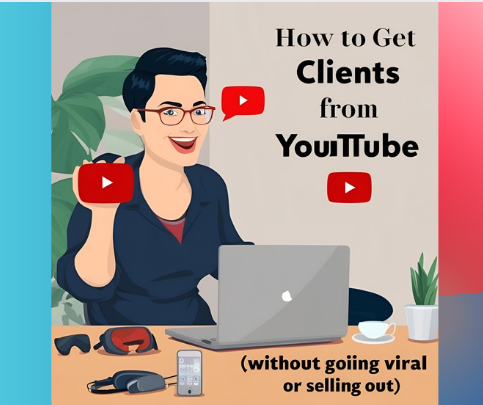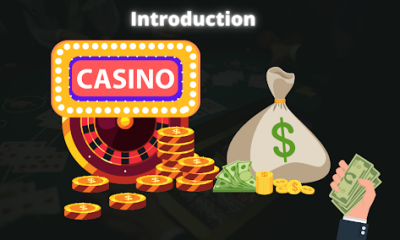Technology
How to Get Clients from YouTube (Without Going Viral or Selling Out)

YouTube isn’t just a platform. It’s a pipeline.
Most creators treat it like a stage — chasing views, likes, and applause. But if you run a service-based business, that’s a trap. You don’t need to be famous. You need to be booked.
In this guide, you’ll learn how to use YouTube to consistently attract and convert clients — no fame required.
1. Shift from Entertaining to Filtering
If your goal is to get clients, stop asking “How do I get more views?” and start asking “How do I attract the right person — and repel the rest?”
Make content that acts like a filter. Use job titles in your video titles. Talk about specific problems your ideal client faces. The more niche, the better.
Boring to the masses? Perfect. Those people aren’t buying from you anyway.
2. Your Content Shouldn’t Be for Everyone
If you’re still creating content for “everyone,” you’re making it for no one. Don’t try to be liked. Try to be understood — by the few who matter.
Great examples of filtering titles:
- “Brand Designers, stop doing this if you want $5K clients.”
- “Freelancers: Here’s why your leads suck.”
- “Private Practice Owners — Are you tracking this number?”
Bottom line: Relevance beats reach. Every time.
3. Lead with Problems, Not Tips
Forget “3 tips to grow your business” or “How to stay productive.” Those are generic and attract low-intent browsers.
Instead, lead with problems. Be blunt. Speak to pain.
Here’s what works:
- “You’re getting ghosted because your proposal sucks. Here’s why.”
- “Still using Canva? That’s why no one takes your brand seriously.”
- “This mistake is why no one’s replying to your DMs.”
Content like this attracts people ready to fix real issues — not window shoppers.
4. Give Each Video One Job
Every video should have a single job: move the right person one step closer to booking a call.
Teach just enough to build trust. Then tell them exactly what to do:
- “Click the link below to apply.”
- “Book your free discovery call.”
Repeat it. Add the link in your video description and pin it in the comments. Make it stupid-easy to take the next step.
5. Track Real Metrics (Not Views)
Vanity metrics don’t pay. Views, likes, and subs mean nothing if they’re not converting.
Track this instead:
- Clicks per video
- Booked calls per video
- Sales per video
Use Bitly or UTM codes to track links. The videos that bring the most clients aren’t always the ones that get the most views.
6. Repel to Attract
Don’t just attract — repel. Be clear who your offer is not for. It saves everyone time, including yours.
Say the price range. Call out red flags. Filter upfront.
Examples:
- “If you need a website under $1,000, this isn’t for you.”
- “Not ready to invest? Don’t book a call.”
- “We don’t do logos. We do full brand strategy.”
The right clients will respect this. It builds trust.
7. Stack Content That Converts
Don’t rely on one viral hit. Stack content strategically across your funnel:
- Top of funnel: Problem-aware content
- Middle: Solution-focused content
- Bottom: Offer-aligned content
When someone binge-watches 2–3 of your videos, they should already be sold on your value before they even hit “Apply.”
8. Depth Beats Breadth
Would you rather have 5,000 random views and zero clients — or 250 views, 10 clicks, and 1 new paying client?
It’s not about going viral. It’s about being seen by the right person at the right time with the right message.
Your most valuable videos might be the ones with the lowest view count. And that’s exactly how it should be.
Final Thoughts: YouTube Isn’t a Stage — It’s a System
The creators who win on YouTube aren’t chasing claps. They’re building pipelines.
If your goal is to get more clients, here’s the play:
- Speak directly
- Filter aggressively
- Track smarter
You don’t need more followers. You need more clarity.













